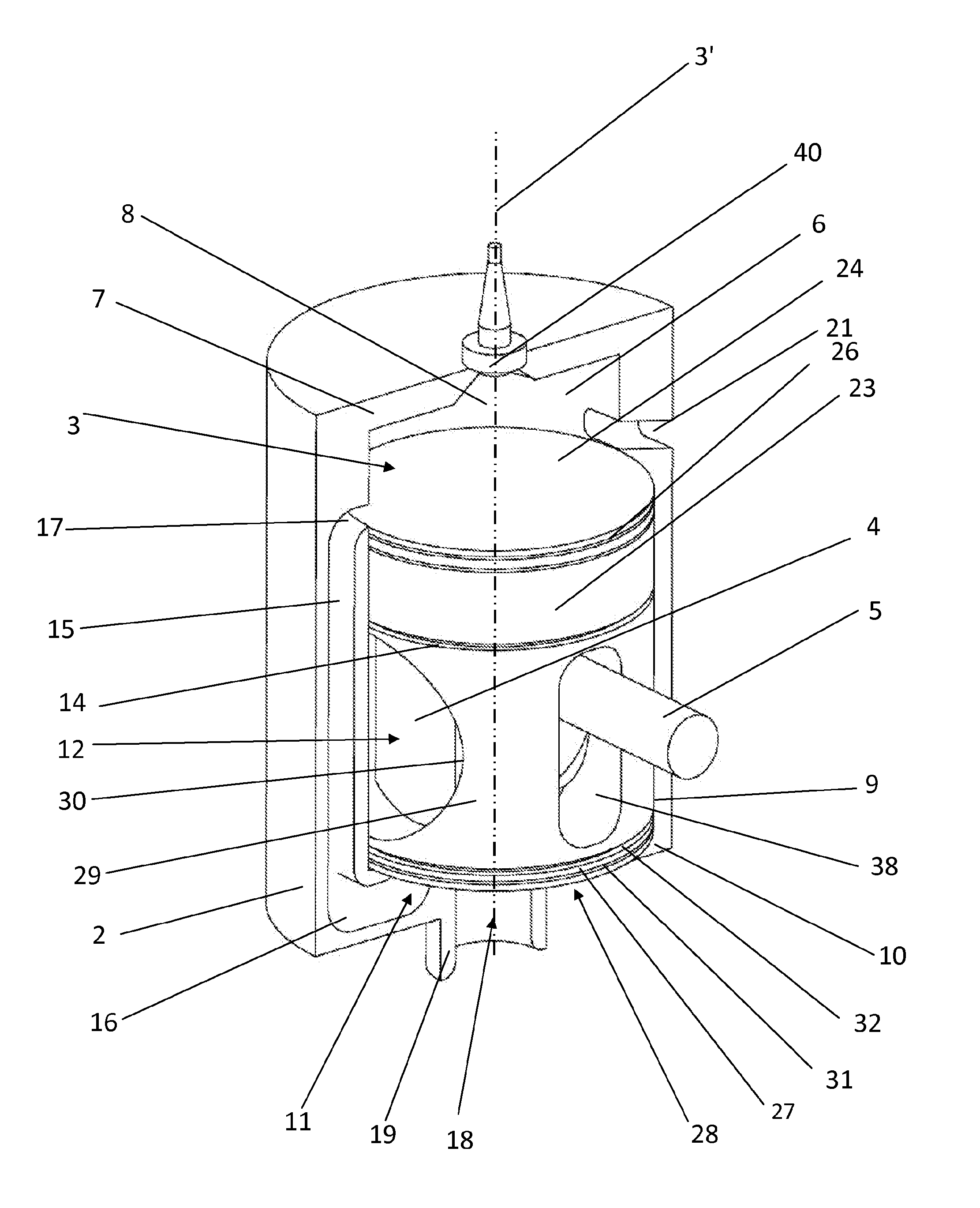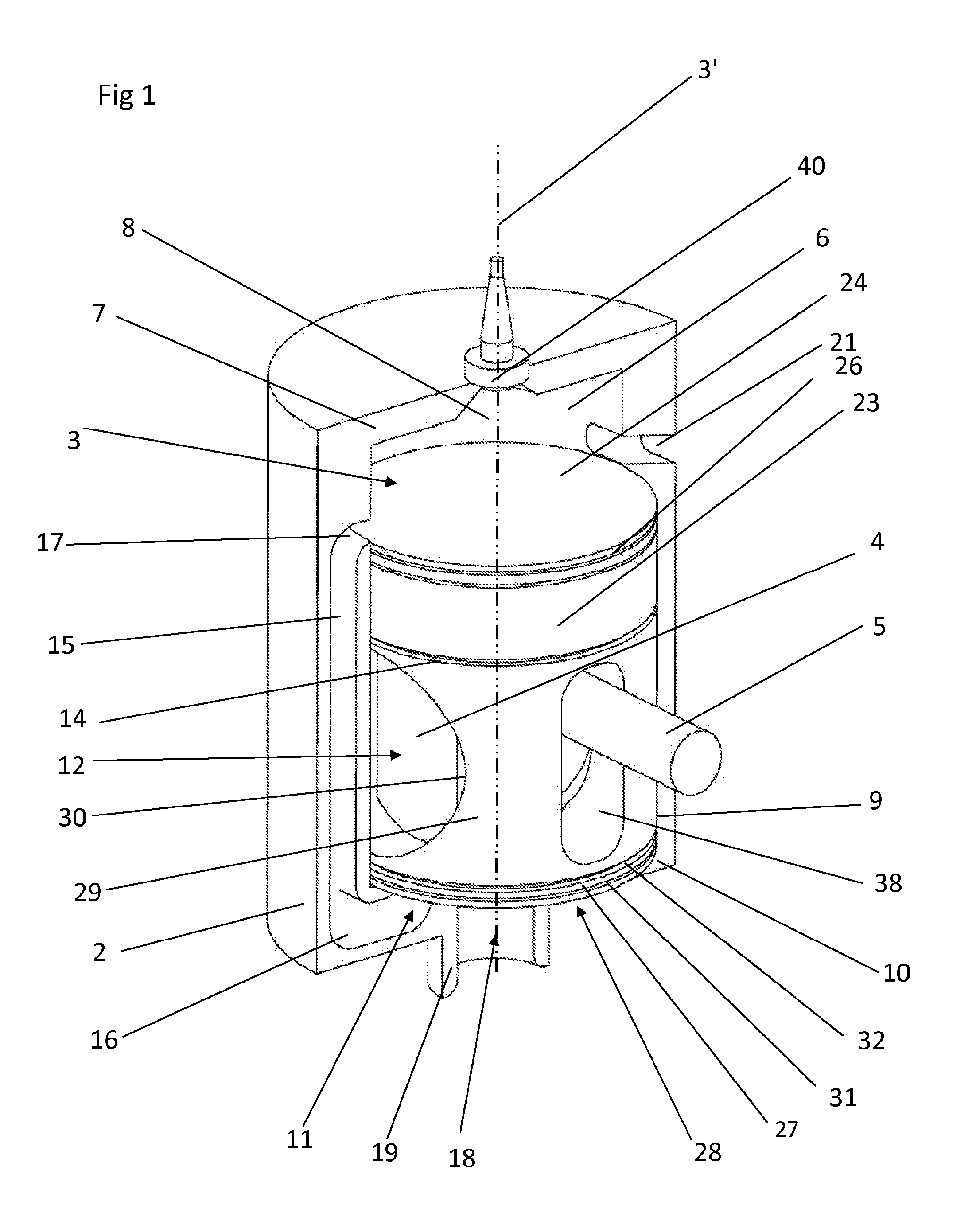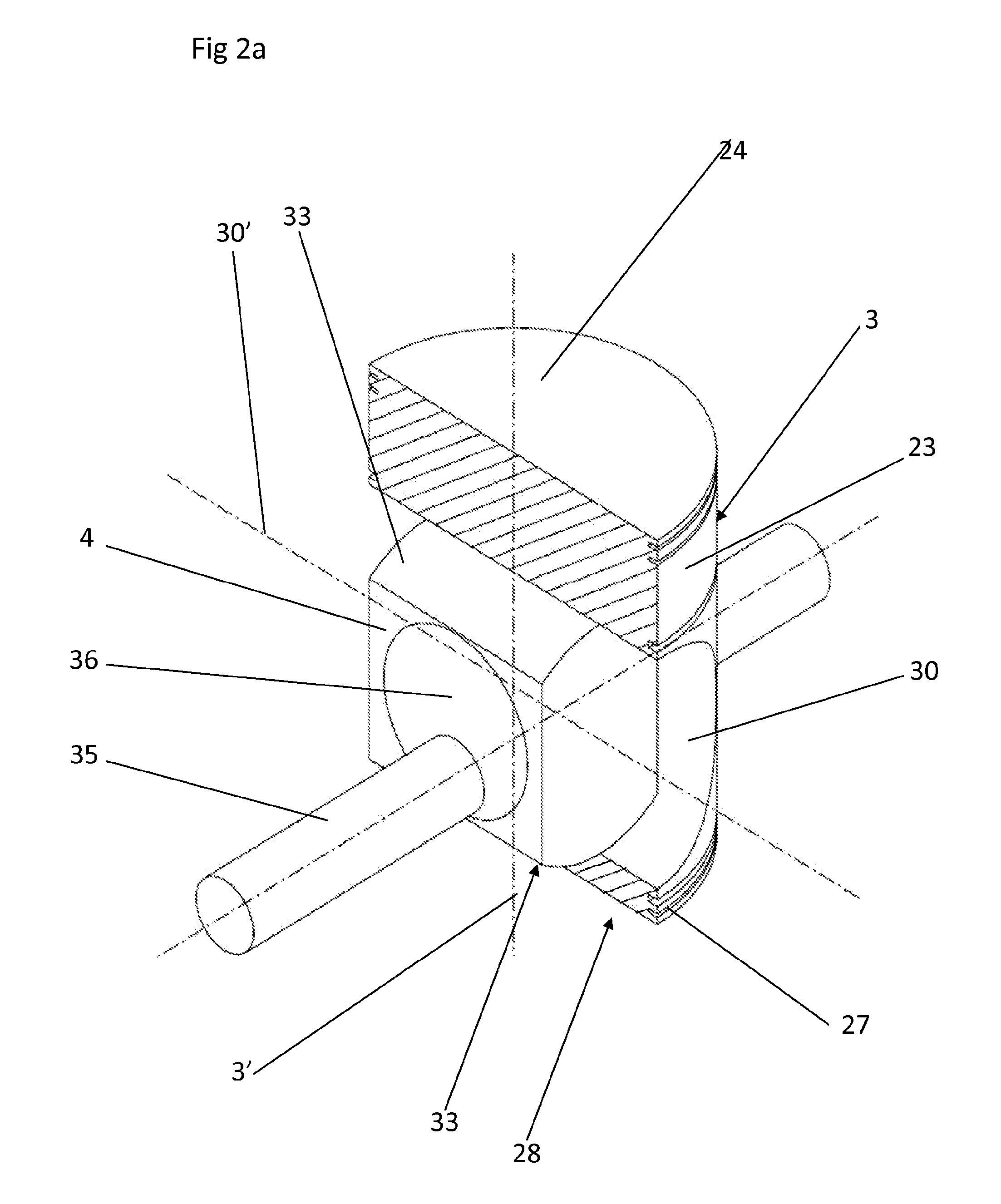Piston Arrangement And Internal Combustion Engine
a technology of piston arrangement and internal combustion engine, which is applied in the direction of machines/engines, combustion air/fuel air treatment, mechanical equipment, etc., can solve the problems of reducing efficiency, reducing engine speed limit, engine performance, etc., and achieves efficient lubrication, less susceptible to wear, and reduced engine running cost
- Summary
- Abstract
- Description
- Claims
- Application Information
AI Technical Summary
Benefits of technology
Problems solved by technology
Method used
Image
Examples
Embodiment Construction
)
[0047]FIG. 1 shows a single cylinder, spark ignition two-stroke engine 1 according to one embodiment of the invention. The engine is shown and described in one possible orientation, however it is envisaged that the engine may be operated at any angle and the terms upper, lower and base etc. should be construed accordingly. The engine 1 includes a casing 2 (shown in partial cut-away in FIG. 1) and a piston 3 which is movable within the casing 2 in reciprocating motion in the direction of its axis 3′. The engine has a linear-to-rotary power transfer mechanism coupled to the piston including a shuttle bearing 4 and a camshaft 5. The power transfer mechanism is shown in more detail in FIGS. 2 to 5.
[0048]The casing 2 includes a first bore 6 and an upper wall 7 defining in part a working cylinder or combustion chamber 8. The casing 2 further includes a second bore 9 and a base wall 10 defining in part a supercharging cylinder or supercharging chamber 11. An intermediate chamber 12 is def...
PUM
 Login to View More
Login to View More Abstract
Description
Claims
Application Information
 Login to View More
Login to View More - R&D
- Intellectual Property
- Life Sciences
- Materials
- Tech Scout
- Unparalleled Data Quality
- Higher Quality Content
- 60% Fewer Hallucinations
Browse by: Latest US Patents, China's latest patents, Technical Efficacy Thesaurus, Application Domain, Technology Topic, Popular Technical Reports.
© 2025 PatSnap. All rights reserved.Legal|Privacy policy|Modern Slavery Act Transparency Statement|Sitemap|About US| Contact US: help@patsnap.com



